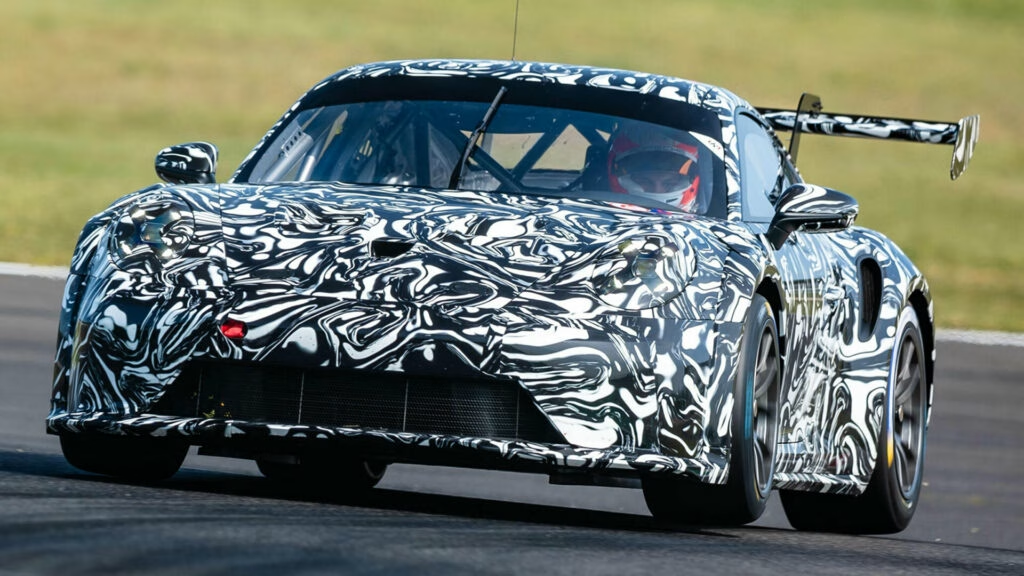What’s New with the 2026 Porsche 911 GT3 Cup and Why Are Racers Buzzing?
Porsche’s latest 911 GT3 Cup is nearly ready to hit the track, and the anticipation is real. If you’re wondering what’s actually changed and why this matters to both pro drivers and weekend warriors, you’re in the right place. Let’s dig into what makes this next-gen Cup car stand out—and why it’s more than just a facelift.
How Has Porsche Improved the Aerodynamics and Exterior?
Aerodynamics are the bread and butter of any race car, and Porsche knows it. For the 2026 GT3 Cup, the team zeroed in on the front end, introducing repositioned hood vents and a new trapezoidal lower intake. The result? Better airflow management, which translates to improved grip and stability at high speeds.
But it’s not just about what’s under the hood. A prominent front splitter, an updated bumper, and a sizable rear wing all work together to keep the car glued to the tarmac. Even the rear end got a subtle tweak, with a repositioned lower brake light for better visibility during those nail-biting braking zones. These changes might sound incremental, but in motorsport, fractions of a second matter—and Porsche’s engineers know how to squeeze every bit of performance out of a design.
What’s Changed Inside the Cockpit?
Glancing inside, you’ll spot a revamped digital instrument cluster and a new steering wheel—both designed with driver feedback in mind. The roll cage and racing seat remain, of course, but it’s the small touches that make a difference during a grueling 45-minute sprint. Digital displays are sharper, controls are more intuitive, and the overall ergonomics are tuned for focus and comfort.
Safety and electronics have also seen upgrades, though Porsche is keeping some cards close to its chest until the official reveal. Expect improvements in crash protection and data acquisition—two things that matter whether you’re chasing a championship or just your personal best.
How Does the Powertrain Stack Up?
While Porsche hasn’t spilled all the beans yet, they’ve hinted at refinements across the board. The outgoing model’s 4.0-liter flat-six engine already churns out 503 horsepower and 347 lb-ft of torque, paired with a six-speed sequential gearbox and a limited-slip differential. That’s a recipe for pure, unfiltered driving joy.
The new car promises even more. Porsche has teased enhancements to the brakes, power transmission, and the iconic six-cylinder boxer engine. Translation: expect sharper throttle response, more consistent braking, and a drivetrain that can handle the abuse of close-quarters racing. Plus, the car has been tested with eFuel, underscoring Porsche’s commitment to sustainable motorsport without sacrificing performance—a move that’s drawing attention from both environmental advocates and racing purists.
What’s the Real-World Impact for Racers and Teams?
Here’s where things get interesting. Porsche’s Cup cars are the backbone of one-make series worldwide, and with over 5,300 units built, they’re among the most produced race cars on the planet. That means any change—no matter how small—ripples across hundreds of teams and thousands of drivers.
Jan Feldmann, Porsche Motorsport’s Project Manager for GT racing cars, put it plainly: the current GT3 Cup is already a benchmark. The focus now is on refining the experience based on feedback from the global racing community. That means better handling, more reliable electronics, and a platform that’s easier to set up and race hard, week in and week out.
Eligible for the 2026 Porsche Mobil 1 Supercup and select Carrera Cup series, the new GT3 Cup is set to become the new standard for customer racing. And with testing already completed at legendary circuits like Monza and the Lausitzring, you can bet this car is ready for prime time.
Why Should You Care—Even If You’re Not a Pro Racer?
Even if you’ll never strap into a Cup car, the tech and philosophy behind the 911 GT3 Cup trickle down to Porsche’s road cars. Innovations in aerodynamics, safety, and efficiency often start on the track before making their way to the street. Plus, Porsche’s push for eFuel compatibility hints at a future where high-performance driving and sustainability aren’t mutually exclusive.
The big takeaway? The 2026 Porsche 911 GT3 Cup isn’t about perfection—it’s about smarter adjustments. Start with one change this week, and you’ll likely spot the difference by month’s end. Whether you’re a racer, an enthusiast, or just someone who appreciates clever engineering, Porsche’s relentless pursuit of better is something worth watching—and maybe even emulating in your own garage.

